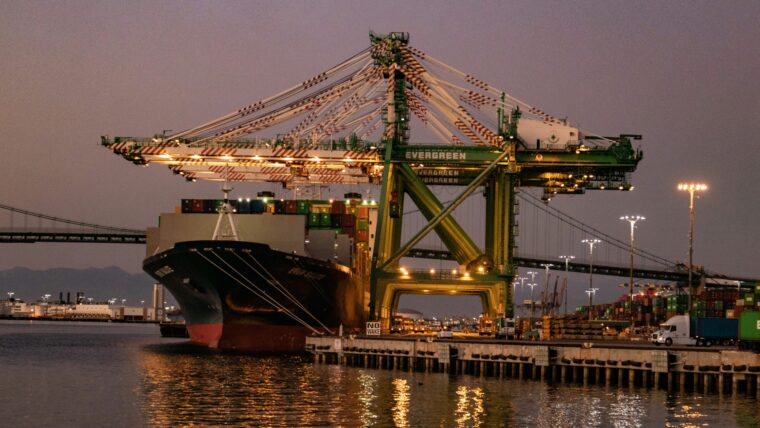
The U.S. House of Representatives overwhelmingly approved bipartisan legislation that authorizes the U.S. Army Corps of Engineers to undertake projects that improve the nation’s ports, harbors, inland waterways and flood protection infrastructure
The Water Resources Development Act of 2024 (WRDA) passed with a vote of 359 to 13. Proponents of the bill, H.R. 8812, say it will strengthen America’s maritime infrastructure and flood protections while boosting economic competitiveness.
“WRDA delivers critical water resource infrastructure improvements for communities across America – from ports to levees to navigation channels, and more,” Transportation and Infrastructure Committee Chairman Sam Graves (R-MO) said in a press release. “The bill also makes policy and programmatic reforms to streamline processes, reduce cumbersome red tape, and get projects done faster.”
Since 2014, a new version of the WRDA has passed through Congress every two years to authorize new projects, with the last version becoming law in 2022. Legislation of this type dates to the late 1960s and ‘70s.
Ports and waterways are vital arteries for the U.S. economy, but many of the structures are aging and face mounting challenges from rising sea levels, severe weather events and the growing economic demands of global trade.
To address these challenges, the bill authorizes 161 new feasibility studies for locally proposed projects and approves 12 projects that have already been reviewed by the Army Corps of Engineers. It also includes provisions changing Army Corps policies to streamline project delivery and make it easier to access permit information. The legislation introduces alternative delivery methods for smaller projects under the Continuing Authorities Program and requires the Corps to track National Environmental Policy Act Documents through their online permitting dashboard.
One of the key reforms is the creation of an initiative to help non-federal interests navigate Corps resources for studying and constructing projects. This change is designed to make the process more accessible and efficient for state governments and local communities seeking to address their water resource needs. The bill also reauthorizes the Federal Emergency Management Agency’s National Dam Safety Program through 2028 and strengthens the High Hazard Potential Dam program, enhancing safety measures for critical infrastructure.
If signed into law, WRDA will also authorize 161 feasibility studies for potential future projects. Notable examples that would be authorized include studies for flood risk management in the Upper Mississippi River basin, coastal storm risk reduction for communities along the Atlantic and Gulf coasts, and navigation improvements in several major ports to accommodate larger vessels.
“This strong bipartisan bill includes several key provisions that expand public recreation access, advance the $1.1 trillion outdoor economy, and support the important work of the U.S. Army Corps of Engineers as a leading provider of public recreation across Corps-managed lakes, reservoirs and navigable waterways,” Frank Hugelmeyer, president and CEO of the National Marine Manufacturers Association, said in a press release.
If enacted, many provisions of WRDA 2024 would take effect immediately, although the timeline for individual projects would vary based on factors such as funding appropriations and project complexity.
Members of the House are now calling on the Senate to take swift action. “The provisions of this bill impact every facet of our water resources across the country, making a better life for every American. I look forward to its enactment upon reconciliation with the Senate,” said Congressman David Rouzer (R-NC), chairman of the water resources and environment subcommittee.
Photo by Steve Saunders on Unsplash
The post House passes bill funding infrastructure at ports, coastal regions appeared first on Government Market News.
